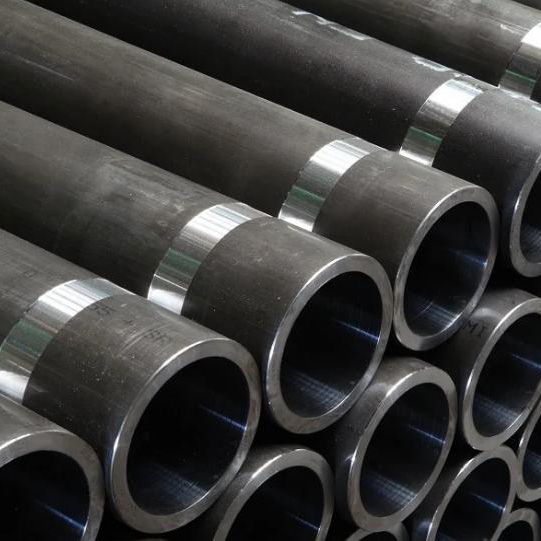Main Difference - Alloy Steel VS Carbon Steel
Primarily, steel is produced by combining iron with other metallic or nonmetallic components. By combining iron with additional elements, the manufacture of steel aims to achieve various qualities. Carbon steel and alloy steel are two types of steel that have different chemical compositions. The main difference between alloy steel and carbon steel is that alloy steel contains substantial amounts of other elements besides iron and carbon, whereas carbon steel has just low amount.
Key Points
1. What is Alloy Steel
– Definition, Properties
2. What is Carbon Steel
– Definition, Properties
3. Alloy Steel VS. Carbon Steel
– Comparison of Key Differences
What is Alloy Steel?

Alloy steels are metal alloys composed mostly of iron, carbon, and a variety of additional elements. It typically contains manganese, silicon, nickel, titanium, copper, and chromium as other components. These elements are known as alloy elements because they are combined to make an alloy. These elements are added to steel in order to improve its qualities. Alloy steel can be classified into the following two categories:
Low Alloy Steel
High Alloy Steel
Low alloy steels include a small quantity of alloying elements, while high alloy steels contain a large quantity of alloying elements. Typically, alloy elements are added to steel to increase its hardness and endurance. Due to the presence of substantial amounts of metals such as chromium, alloy steel is also resistant to corrosion.
Stainless steel is an example of an alloy steel. In addition to iron and carbon, the mixture of components contains roughly 10 percent chromium.
What is Carbon Steel

Carbon steel is composed of iron and carbon. Alloy elements are present in trace amounts. Some of these elements are silicon, manganese, sulfur and phosphorous. Carbon steel is also divided into two groups as below.
High Carbon Steel
Low Carbon Steel
Carbon steel has qualities such as hardness, poorer ductility, lower weldability, and a low melting point due to its high carbon content. Mild steel is a form of low carbon steel that has between 0.05 and 0.25 percent carbon. In damp conditions, it is corrosive due to its high iron concentration. Carbon content ranges from 0.6% to 1.0% in high carbon steels. This high carbon steel is extremely durable. As a result, carbon steels are used as construction materials.
Difference Between Alloy Steel and Carbon Steel
Here’s a brief table showing some differences between alloy vs carbon steel:
|
|
Alloy Steel |
Carbon Steel |
|
Corrosion resistance |
Good |
Poor |
|
Hardness |
Low |
High |
|
Strength |
Low |
High |
|
Toughness |
Low |
High |
|
Malleability |
Low |
High |
|
Weldability |
Low |
High |
|
Ductility |
High |
Low |
|
Cost |
Expensive |
Inexpensive |
Conclusion
The composition of elements in steel differs from one type of steel to another. Therefore, steels are categorized mainly according to their composition. Alloy steel and carbon steel are such two types of steel. The main difference between alloy steel and carbon steel is that alloy steel has high amounts of other elements apart from iron and carbon whereas carbon steel has trace amounts of other elements apart from iron and carbon.
Most of our quotes are delivered within 24/36 hrs. and usually in much less time, depending on project details.
Our team will contact you directly about your CNC machining quote to ensure you’ve received and understand all aspects of your quotation and to answer any questions you may have about your options.